- Home
- Tony Hillerman
The Shape Shifter jlajc-18 Page 15
The Shape Shifter jlajc-18 Read online
Page 15
Vang extracted a very small camera and showed it to Leaphorn.
THE SHAPE SHIFTER
179
“It is one of those new ones with the computer chips,” Vang said, smiling proudly. “Very modern. You look through the finder, and see what you are photographing, and click it. Then if you don’t like it, you can erase it, and shoot again until you get good pictures. What you think?
Pretty nice?”
“He wanted you to photograph Delonie?” That thought surprised Leaphorn.
“No. No. Not like taking his portrait, not anything like that. He said just take casual pictures. Of his house, his truck, things like that. But he didn’t want Mr. Delonie to see me taking pictures. He told me that lots of people don’t like having their pictures taken.”
“Did he want you to question Mr. Delonie about anything?”
“Oh no,” Vang said. “I was just to be acting like a tourist. Just curious. Just looking around. It would be best, Mr.
Delos said, if Mr. Delonie didn’t even notice me.”
“Did he tell you anything about Delonie? About whether he was an old friend? Anything like that?”
“No,” Vang said, “but I don’t think he was a friend.” Leaphorn studied Vang. “What causes you to think that?”
Vang shrugged. “Nothing, really. Just the way he looked when he talked about him. It make me think that Mr. Delonie made Mr. Delos feel nervous. Or something like that, I think.”
Exactly, Leaphorn thought. Mr. Vang is short on information but well armed with an astute intelligence. Smart enough to try to look beyond the bright and shiny surface of external appearances.
“You know, Tommy, I think the only sensible thing for 180
TONY HILLERMAN
us to do is for me to take you there,” Leaphorn said. “We can leave your car here in Crownpoint. Lock it up. We’ll tell whoever’s at the Tribal Police office. They’ll take care of it.”
Vang looked doubtful.
“Otherwise, you’ll probably get lost,” Leaphorn said.
“I think I have to take the truck I came in,” Vang said.
“Have to have it.”
Leaphorn noticed Vang was looking tense, fright-ened.
“Why not just ride with me?”
Vang looked at Leaphorn, looked away, then down.
“After I go where Mr. Delonie lives, ah—. After I do what Mr. Delos told me to do, then I have to drive over to that place where he will be shooting the elk, and wait for him there, and he will be looking for this truck, and if I am riding in another truck, I think then he would think that I have been disobeying him.”
“Oh,” Leaphorn said. And waited.
“Yes,” Vang said. “I think I had better be there in that truck I drive for him.”
“Are you sort of afraid of him?”
“Afraid?” Vang asked, and thought about it. Nodded.
“Yes,” he said. “Very afraid.”
Leaphorn considered that for a moment. Of course he would be afraid. Everything in Tommy’s life depended on Jason Delos. Going home to his Hmong mountains, most of all.
“Okay,” he said. “Then we will turn the arrangement around. We’ll leave my truck at the Tribal Police office and we’ll take this one.”
And so they did. Vang pulled his King Cab pickup THE SHAPE SHIFTER
181
into the Tribal Police parking lot behind Leaphorn, then turned off the ignition and waited while Leaphorn went into the office.
Inside, Leaphorn shook hands with Corporal Des-mond Shirley and explained what he was doing. Then he returned to his pickup and removed his cell phone and his police issue .38 pistol from the glove box. He dropped both into his jacket pocket, locked the door, and walked over to where Vang was sitting in his vehicle, watching.
“I think I should drive,” Leaphorn said.
Vang looked surprised.
“Because while you know the truck better, I know the roads, and all these pickups are pretty much alike.” Vang scooted over.
He took them north past the Crownpoint airport, then eastward across twenty-five miles of absolutely empty country toward Whitehorse. For the first half hour they drove in a sort of nervous silence, with Vang keeping his eye on his own road map—apparently making sure Leaphorn was taking them where his instructions told him to go. At the little settlement of Whitehorse, the pavement of Navajo 9 swerves northward to climb Chaco Mesa en route to the ancient ruins of Pueblo Pintado before swerv-ing back southward toward Torreon. Leaphorn turned off the pavement onto the twenty-three miles of dirt road that goes directly to Torreon without the wide detour.
“Ah, Mr. Leaphorn,” Vang said, sounding uneasy.
“You are leaving Highway 9. But my map says Nine takes us to Torreon. Takes us to find Mr. Delonie.”
“It does,” Leaphorn said. “But this dirt road takes us there directly, without going way up on Chaco Mesa. This way we get there quicker, and right to the Torreon Chap-182
TONY HILLERMAN
ter House. We should stop there and ask where we can find Delonie.”
“Oh,” Vang said. “Would he maybe be at the chapter house? Is that like a government office? For the Navajos who live around there?”
“It is,” Leaphorn said. “But Delonie isn’t a Navajo. I know he’s part Indian—Pottawatomie and Seminole—
because the name sounds French.”
“French?” Vang’s tone suggested he would like an explanation.
“Both of those tribes once lived in the part of America where a lot of French people settled. Like Louisiana and that southern coastal country. Then the Pottawatomies helped General Jackson defeat the British in the War of 1812. The fight for New Orleans. And when Jackson was elected president, he granted citizenship to the Pottawatomies who helped him. Made them the ‘Citizen Band.’
Then when the white people wanted the land they were living on, he had the army round them up and moved them to Kansas.”
Leaphorn glanced at Vang, noticed that Vang was not following his explanation and decided to hurry through it.
“Anyway, then the railroad built a transcontinental line through there, and the land in Kansas got valuable and the white people wanted it. So the Pottawatomies were rounded up again and moved down to Oklahoma.
They called it Indian Territory then. A lot of Seminoles got there, too, but I don’t remember how that happened.” Vang considered this.
“I think this is something like what happened to our people, too. My parents said our ancestors started way up north, in China, and kept being pushed south, and finally THE SHAPE SHIFTER
183
got chased up into the mountains. But if Mr. Delonie is not a Navajo, why then would those at the Navajo Chapter House be likely know where to find him?”
“Because when there aren’t many people around, everybody gets noticed. I guess you’ve seen that very few people live out here.” He glanced at the odometer. “In the thirty-one miles since we left Whitehorse we have not passed even one residential place. And just about forty people live at Whitehorse. Where there are very few people, the people who are there all seem to know one another, no matter their tribe or their race.”
“It was that way in our mountains, too. But just in the mountains. Out of the mountains where there were more people nobody liked the Hmongs.”
“Look to the south,” Leaphorn said, gesturing to the mountain dominating that horizon with enough early winter snowpack to provide a glittering reflection of afternoon sunlight. “The map you have calls it Mount Taylor; it’s fifty miles from here, and there is absolutely nobody between us and that mountain.”
Vang considered that. “It looks so close.”
“It’s an old volcano,” Leaphorn said, finding himself lapsing into his habit of becoming a tour director anytime he was driving with anyone unfamiliar with his territory.
“Biggest mountain in this part of the reservation. Eleven thousand three hundred and something feet high. It ha
s a lot of historical and religious significance for us. In our people’s origin story, it was built by First Man when the Navajos first got here. It’s one of our four sacred mountains. Four mountains that mark the boundaries of our land. We have several names for that one. The Navajo ceremonial name is tsoodzil, and the formal title is 184
TONY HILLERMAN
dootl’izhiidzii, which translates to ‘Turquoise Mountain.’
And then on the map it’s named after General Zachary Taylor, and we also call it ‘Mother of Rains’ because the west winds pile clouds on top of it and then drive out over the prairie.”
Leaphorn noticed Vang had been trying to suppress a grin. Recognized what might be an opportunity to get closer to this man. To understand him. To be understood.
“You’re smiling,” Leaphorn said. “What?”
“The way you say those two Navajo names,” he said, grinning again. “Our Hmong language has words like that.
You have to make funny sounds when you say them.”
“Some of our words don’t fit well with the white man’s alphabet,” Leaphorn said. “And since your people originated in China—well, at least a lot of anthropologists believe you did, and there’s pretty good evidence that was your point of origin, too. So it wouldn’t surprise me if we had some connections way back in time. How about your tribe’s stories of how it originated?” Vang looked surprised. Raised his eyebrows. Said, “I don’t anything know about that. About what you mean.”
“I mean like what we call ‘origin stories.’ For example, in the Judeo-Christian culture—the Europe-based white culture—in that one God created the universe in a series of six days, and then said we should rest on the seventh one.” Leaphorn summarized the rest and mentioned the Garden of Eden.
“Adam and Eve,” Vang said. “I’ve heard about that.” He smiled, touched his side. “And that’s why we have one less rib on one side of our chest.”
Leaphorn paused, glanced at Vang, his facial expression a question. Vang nodded. Yes. He was interested.
THE SHAPE SHIFTER
185
“Well, Navajo tradition, at least the way I was taught it in my clan, doesn’t give us such a clear statement of the creating power, or the sequences of how it happened. We believe we first existed in a series of previous worlds, but not exactly as flesh and blood humans. We were more like concepts, sort of the notion of what we would eventually be. Anyway, in our first world we do evil things and the Creator destroys it, and we escape into a second world.
These early humans . . .” Leaphorn paused again, studying Vang. “Am I getting too confusing?”
“Go on,” Vang said.
“Let’s call this early version of humans prehumans,” Leaphorn said. “Anyway, bad conduct again, and the second world was destroyed, and they escaped into the third world. Now our origin stories get more detailed. We learn how the prehumans were separated into the sexes; men and women. Men doing the hunting and fishing and being the warriors, and the women raising families.
The selfish, mean, greedy behavior was going on again, and the Creator repeated the process. The way my clan teaches the story, a sort of super-version of Coyote kid-napped the baby of another of these primal beings—one we call Water Monster—and he was so enraged he produced a terrible flood and drowned the third world as punishment. So we climbed up through a hollow reed and escaped into this world.”
Leaphorn gestured at the landscape they were driving through, the eroded slopes of the butte they were passing, the distant mountain ridges, the high, dry, semi-desert landscape of rabbit brush, snakeweed, bunchgrass, and juniper and, above it all, a scattering of puffy clouds decorating the clear deep blue of the high country sky.
186
TONY HILLERMAN
“Our Fourth World,” Leaphorn said. “We call it Glittering World.”
He glanced at Vang, who was staring out the windshield.
It was a longer statement than Leaphorn had intended, but Vang’s expression showed he was interested.
Maybe even intensely interested.
“You have any questions?” Leaphorn asked.
“Oh, yes,” Vang said. “You climbed up to here—” Vang indicated “here” with a wave of his hand at the landscape.
“Climbed up a hollow reed?”
“Well, as I understand it, we weren’t really humans yet. But they had human characteristics. The same tendency to push and shove, try to get on top, try to get out in front, and they still had to get revenge, for example, if someone hurt them. The habits that always got them into trouble. I guess you could just call it selfishness. Being greedy.”
Vang considered this. Nodded. “All the bad things that were the reason the Creating Spirit punished them for. The reasons the Creator made the flood. To destroy all that. That’s what it means?”
“I think so,” Leaphorn said. “That’s all that seems to make any sense, anyway. In any of these various religions, the Creator seems to have started mankind, to have given humans a bunch of lessons on how to live the good life, be happy, stay happy by loving your neighbors, feeding the poor, not being selfish. Not chasing after fame, fortune, three car garages, all that. But he didn’t make us slaves.
He gave us a way to tell good from evil, but he also gave us free will. You know. Do you want to get rich, or do you want have a good life. It’s our choice.” THE SHAPE SHIFTER
187
“I think our people got created a lot like that, too. But I never really had much chance to hear our stories. And I don’t think the Hmong ever had much chance to get rich.” He sighed. “Didn’t even have any chance to teach their children about all that.”
Vang’s voice faded into a sort of sadness when he said that, and he looked down at his hands.
Something like me, Leaphorn was thinking. Tommy Vang sitting there beside him was another product of childhood interrupted. Vang’s by war. Joe Leaphorn’s by that old assimilation policy of the Bureau of Indian Affairs. By the school buses that hauled Indian kids away to boarding schools. Away from our hogans where the old people would have been teaching us all the ancestor stories—of the first, second, and third worlds. The buses brought them home when summer came, of course, to help with the herding, and their other duties, but the summer was the time tradition allowed for another set of stories, about hunting, relations with the animal worlds.
The origin stories could be told only in the cold times, during the season when the thunder sleeps, when it was quiet, and the snow kept them in the hogans, and there was nothing to distract them, nothing to keep the children from listening, and thinking, and understanding.
And thus, Leaphorn was thinking, the assimilation program had cost much of this generation the heart and soul of the Navajo system of values. And this led him to another thought. Why younger, much more modern Officer Jim Chee, who had been born late enough to escape assimilation, was much better tuned to the Navajo Way than he was. Why Jim Chee still believed he could be both a policeman enforcing most belagaana laws and a 188
TONY HILLERMAN
shaman conducting the ceremonies that cured people who violated Navajo cultural rules and restored them to harmony.
“Why don’t you tell me what you remember,” Leaphorn said. “When I was a lot younger and a student, I studied anthropology at the university. I learned just a little, very, very little, about the cultures of your part of the world. Didn’t your Creator have an emissary, sort of an am-bassador, who he sent down to sort of govern humanity?”
“Ah, yes,” Vang said, looking delighted. “How you know about that?”
“Mostly just from books,” Leaphorn said. “We used one called”—Leaphorn paused, probing his memory—“I think it was Hmong, A History of a People.”
“Did it tell about Hua Tai?”
“I have to think,” Leaphorn said, noticing that Vang’s attitude had changed abruptly. His patient, enduring leth-argy had converted into enthusiasm.
“As I remember it,” Leaphor
n said, “Hua Tai was the God who created the world and the people. But most of the little bit we learned was about his lieutenant. I think
‘Harshoes,’ or something like that. I sort of thought of him as being like Mohammed. You know, the prophet who represented God to the Arabian world.”
“You say his name ‘Yer Shua,’” Vang said, pronouncing the syllables very slowly and repeating them. “I have heard about Mohammed. They talk about him some on the television news. About the war in Iraq. But Yer Shua was different, I think. He was part God and part man, I think. I remember they told about him being a farmer like the rest of the Hmong people, and raising pigs and having a whole lot of wives. And he was the one who tried THE SHAPE SHIFTER
189
to take care of the Hmong people. I mean he tried to protect them.”
“We Navajos have what we call yei, ” Leaphorn said.
“Powerful, like spirits, but good. And the belagaana—
white people—they have . . . well it depends on whether they’re Christian, or Jewish, or what. Anyway, their bad supernatural beings are devils, or witches, or some other names. Good ones are angels.”
They crossed the Continental Divide on Navajo Route 9 as Leaphorn was covering this side of theology, and now the Torreon ridge rose about six miles ahead, and beyond it Torreon arroyo and Torreon itself, with its chapter house and maybe, Leaphorn guessed, something like 150 residents scattered around the valley. Above it all, rising like a great sunlit thumb against a background of scattered clouds some thirty miles to the southeast, was Cabezon Peak. The thoughts Leaphorn had been forming jelled into a sudden decision. He slowed, pulled the vehicle off to the side where a ranch entry road had widened the shoulder.
“There’s Torreon,” he told Vang, pointing at the scattered buildings far ahead. “Before we get there, let’s talk about what we’re doing there.” He released his seat belt and opened the car door.
“Talk?” Vang said. “What we talk about?”
“I want to hear some more about what you’ve been telling me about the Hmong, for one thing,” Leaphorn said. “And if you’re interested, I’ll tell you more about the Dineh and about our traditional relationship with God and the spirits. And then we ought to plan what we’re going to do about finding Mr. Delonie. And we should stretch our legs a little. I’m getting old, and I get stiff.” 190

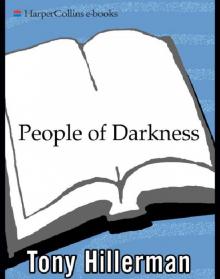 People of Darkness
People of Darkness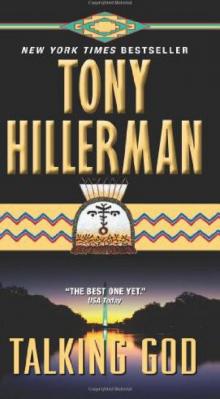 Talking God jlajc-9
Talking God jlajc-9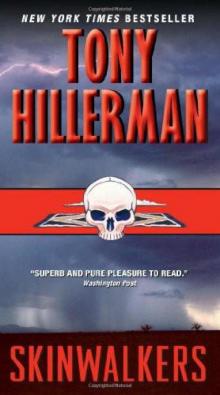 Skinwalkers jlajc-7
Skinwalkers jlajc-7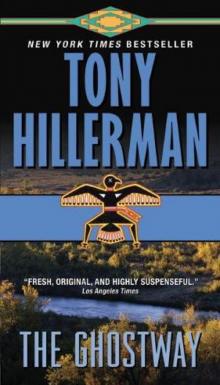 The Ghostway jlajc-6
The Ghostway jlajc-6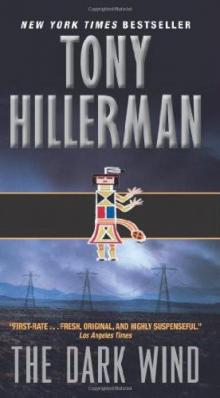 The Dark Wind jlajc-5
The Dark Wind jlajc-5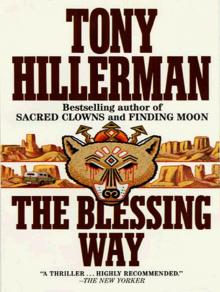 The Blessing Way
The Blessing Way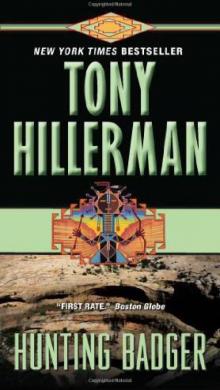 Hunting Badger jlajc-14
Hunting Badger jlajc-14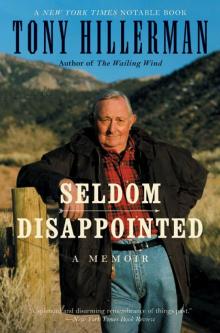 Seldom Disappointed: A Memoir
Seldom Disappointed: A Memoir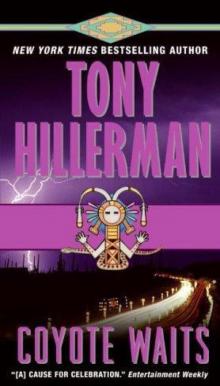 Coyote Waits jlajc-10
Coyote Waits jlajc-10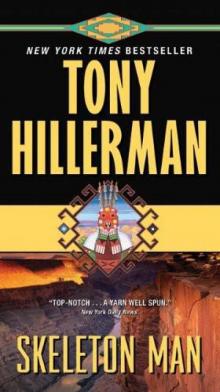 Skeleton Man jlajc-17
Skeleton Man jlajc-17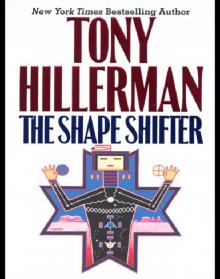 The Shape Shifter
The Shape Shifter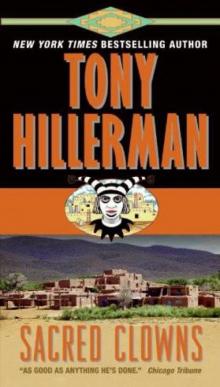 Sacred Clowns jlajc-11
Sacred Clowns jlajc-11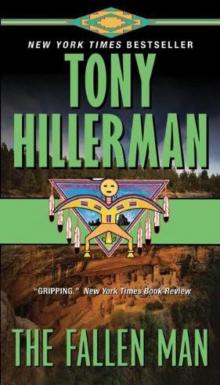 The Fallen Man jlajc-12
The Fallen Man jlajc-12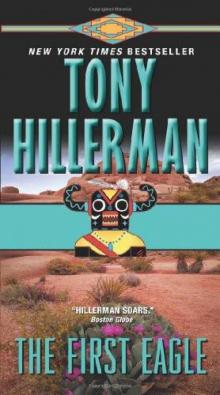 The First Eagle jlajc-13
The First Eagle jlajc-13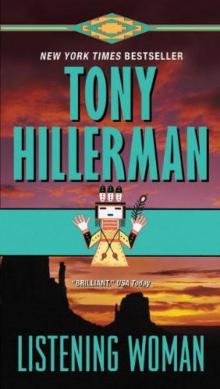 Listening Woman jlajc-3
Listening Woman jlajc-3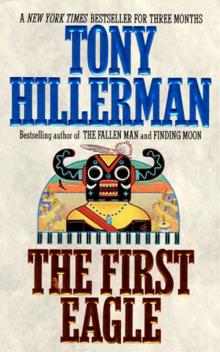 The First Eagle
The First Eagle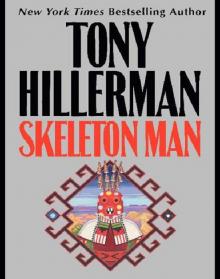 Skeleton Man
Skeleton Man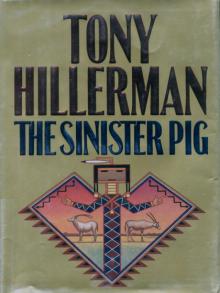 The Sinister Pig jlajc-16
The Sinister Pig jlajc-16 People of Darkness jlajc-4
People of Darkness jlajc-4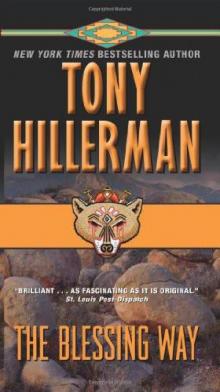 The Blessing Way jlajc-1
The Blessing Way jlajc-1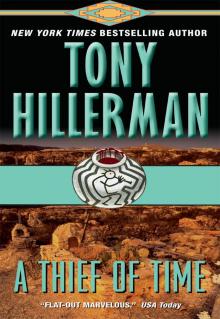 A Thief of Time
A Thief of Time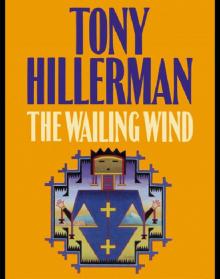 The Wailing Wind
The Wailing Wind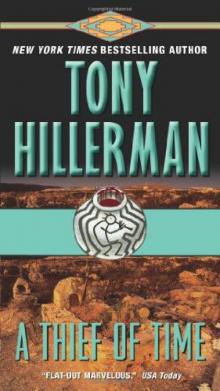 A Thief of Time jlajc-8
A Thief of Time jlajc-8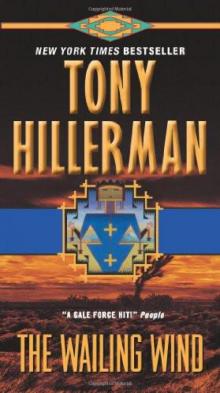 The Wailing Wind jlajc-15
The Wailing Wind jlajc-15 The Shape Shifter jlajc-18
The Shape Shifter jlajc-18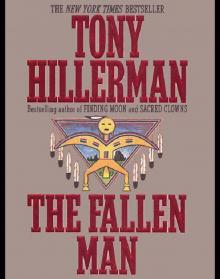 The Fallen Man
The Fallen Man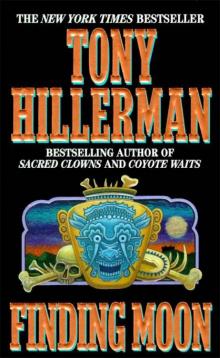 Finding Moon
Finding Moon